-
 It was built to a design created by Thomas Newcomen, who created the first steam engine to pump water by devising a method to generate power from atmospheric pressure.
It was built to a design created by Thomas Newcomen, who created the first steam engine to pump water by devising a method to generate power from atmospheric pressure. -
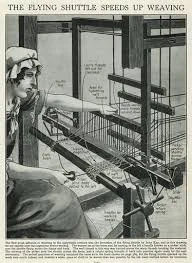 It allowed cotton to be woven at a greater scale and speed than by hand.
It allowed cotton to be woven at a greater scale and speed than by hand. -
 The device reduced the amount of work needed to produce cloth, with a worker able to work eight or more spools at once.
The device reduced the amount of work needed to produce cloth, with a worker able to work eight or more spools at once. -
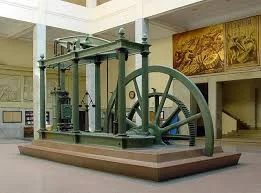 He designed a separate condensing chamber for the steam engine that prevented enormous losses of steam.
He designed a separate condensing chamber for the steam engine that prevented enormous losses of steam. -
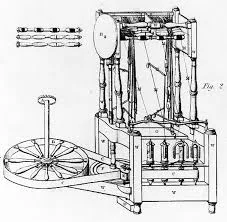 Arkwright became interested in the development of carding and spinning machinery to replace hand labour in the conversion of raw cotton to thread for weaving.
Arkwright became interested in the development of carding and spinning machinery to replace hand labour in the conversion of raw cotton to thread for weaving. -
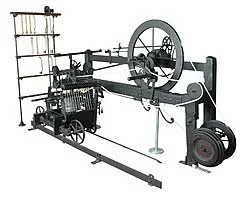 The machine made it easier to produce cotton yarn and thread. The spinning mule allowed one person to work more than 1,000 spindles at the same time.
The machine made it easier to produce cotton yarn and thread. The spinning mule allowed one person to work more than 1,000 spindles at the same time. -
 They also helped reduce transportation costs and improve delivery times, making goods more affordable for consumers.
They also helped reduce transportation costs and improve delivery times, making goods more affordable for consumers. -
 The Luddites were members of a 19th-century movement of English textile workers who opposed the use of certain types of cost-saving / wage stealing machinery, and often destroyed the machines in clandestine raids.
The Luddites were members of a 19th-century movement of English textile workers who opposed the use of certain types of cost-saving / wage stealing machinery, and often destroyed the machines in clandestine raids. -
 Stephenson's Rocket is an early steam locomotive of 0-2-2 wheel arrangement. It was built for and won the Rainhill Trials of the Liverpool and Manchester Railway (L&MR), held in October 1829 to show that improved locomotives would be more efficient than stationary steam engines.
Stephenson's Rocket is an early steam locomotive of 0-2-2 wheel arrangement. It was built for and won the Rainhill Trials of the Liverpool and Manchester Railway (L&MR), held in October 1829 to show that improved locomotives would be more efficient than stationary steam engines. -
 The railroad opened for through traffic between Sacramento and Omaha on May 10, 1869, when CPRR President Leland Stanford ceremonially tapped the gold "Last Spike"
The railroad opened for through traffic between Sacramento and Omaha on May 10, 1869, when CPRR President Leland Stanford ceremonially tapped the gold "Last Spike" -
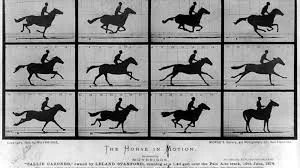 The first motion picture ever shot was Roundhay Garden Scene, shot in 1888. Louis Le Prince dazzles the eye with a remarkable display of 4 people walking in a garden, creating this 2.11-second cinematic masterpiece.
The first motion picture ever shot was Roundhay Garden Scene, shot in 1888. Louis Le Prince dazzles the eye with a remarkable display of 4 people walking in a garden, creating this 2.11-second cinematic masterpiece. -
 Thomas Edison did not invent the light bulb. In 1840, British scientist Warren de la Rue developed an efficient light bulb using a coiled platinum filament but the high cost of platinum kept the bulb from becoming a commercial success.
Thomas Edison did not invent the light bulb. In 1840, British scientist Warren de la Rue developed an efficient light bulb using a coiled platinum filament but the high cost of platinum kept the bulb from becoming a commercial success. -
 The Home Insurance Building. Completed in 1885 on LaSalle Street between Adams and Monroe, it holds the distinction of being among the world's first skyscrapers.
The Home Insurance Building. Completed in 1885 on LaSalle Street between Adams and Monroe, it holds the distinction of being among the world's first skyscrapers. -
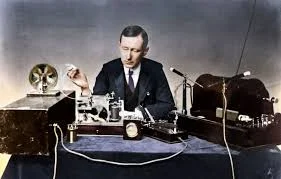 Italian inventor Guglielmo Marconi (pictured at right) became known across the world as the most successful inventor in applying radio waves to human communication in the 1890s. In 1895 he sent a wireless Morse Code message to a source more than a kilometer away.
Italian inventor Guglielmo Marconi (pictured at right) became known across the world as the most successful inventor in applying radio waves to human communication in the 1890s. In 1895 he sent a wireless Morse Code message to a source more than a kilometer away. -
 Wind, sand, and a dream of flight brought Wilbur and Orville Wright to Kitty Hawk, North Carolina where, after four years of scientific experimentation, they achieved the first successful airplane flights .
Wind, sand, and a dream of flight brought Wilbur and Orville Wright to Kitty Hawk, North Carolina where, after four years of scientific experimentation, they achieved the first successful airplane flights . -
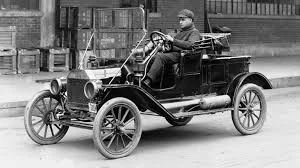 The first production Model T was built on August 12, 1908, and left the factory on September 27, 1908, at the Ford Piquette Avenue Plant in Detroit, Michigan.
The first production Model T was built on August 12, 1908, and left the factory on September 27, 1908, at the Ford Piquette Avenue Plant in Detroit, Michigan. -
 Belgian chemist and clever marketeer Leo Baekeland pioneered the first fully synthetic plastic in 1907. He beat his Scottish rival, James Swinburne, to the patent office by one day.
Belgian chemist and clever marketeer Leo Baekeland pioneered the first fully synthetic plastic in 1907. He beat his Scottish rival, James Swinburne, to the patent office by one day. -
 Increasing diplomatic tensions between the European great powers reached a breaking point on 28 June 1914, when a Bosnian Serb named Gavrilo Princip assassinated Archduke Franz Ferdinand, heir to the Austro-Hungarian throne.
Increasing diplomatic tensions between the European great powers reached a breaking point on 28 June 1914, when a Bosnian Serb named Gavrilo Princip assassinated Archduke Franz Ferdinand, heir to the Austro-Hungarian throne.